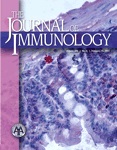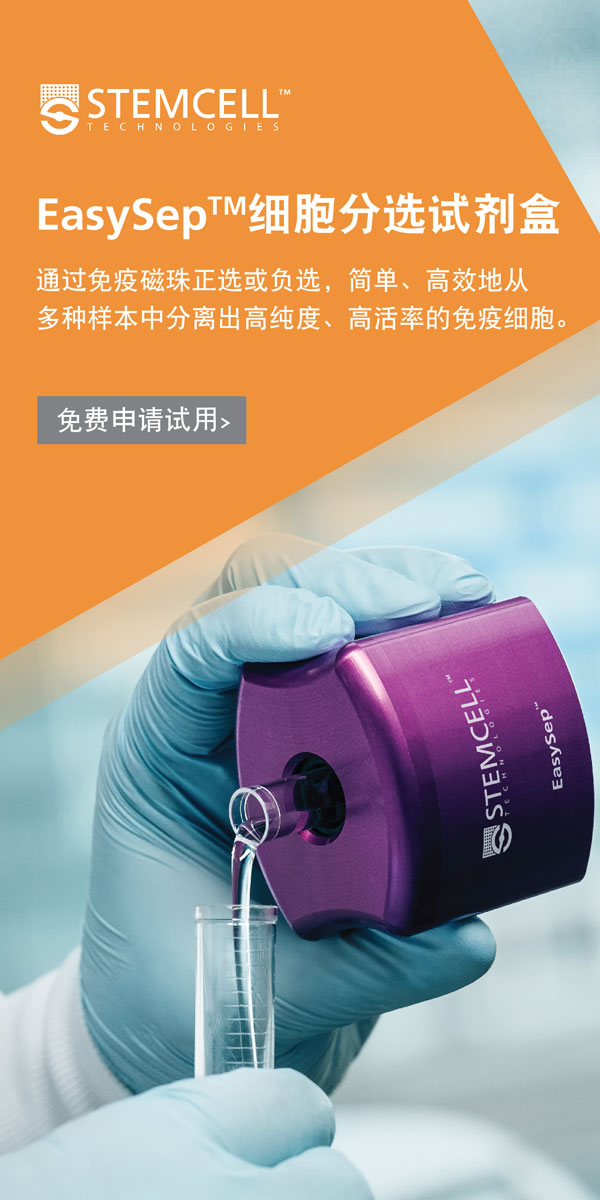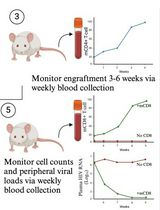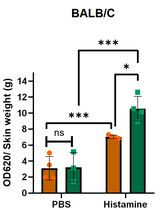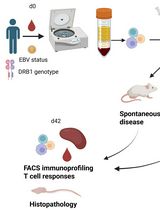- EN - English
- CN - 中文
Gastric Aspiration Models
胃内容物的气管吸入模型
发布: 2013年11月20日第3卷第22期 DOI: 10.21769/BioProtoc.968 浏览次数: 20517
评审: Anonymous reviewer(s)
Abstract
The procedures described below are for producing gastric aspiration pneumonitis in mice with alterations for rats and rabbits described parenthetically. We use 4 different injury vehicles delivered intratracheally to investigate the inflammatory responses to gastric aspiration:
1) Normal saline (NS) as the injury vehicle control
2) NS + HCl, pH = 1.25 (acid)
3) NS + gastric particles, pH ≈ 5.3 (part.)
4) NS + gastric particles + HCl, pH = 1.25 (acid + part.)
The volume, pH, and gastric particle concentration all affect the resulting lung injury. In mice, we generally use an injury volume of 3.6 ml/kg (rat: 1.2 ml/kg, rabbit: 2.4 ml/kg), an injury pH (for the acid-containing vehicles) of 1.25, and a gastric particulate concentration (in the particulate-containing vehicles) of 10 mg/ml (rat: 40 mg/ml). In our hands this results in a maximal, non-lethal lung injury with ≤ 10% mortality for the most injurious vehicle (i.e., acid + part.) The maximum tolerable particulate concentration needs to be determined empirically for any new strains to be used, especially in genetically-altered mice, because an altered inflammatory response may have detrimental affects on mortality.
We have extensive experience utilizing these procedures in the outbred strain, CD-1, as well as many genetically-altered inbred stains on the C57BL/6 background. Choice of strain should be carefully considered, especially in terms of strain-specific immune bias, to assure proper data interpretation. The size of the mouse should be ≥ 20 g at the time of injury. Smaller mice can be attempted, if necessary, but the surgical manipulation becomes increasingly more difficult and the surgery survival rate decreases substantially. There are no size or strain constraints for rat and rabbit models, but we generally use Long-Evans rats at 250-300 g and New Zealand White rats at ≈ 2 kg at the time of initial injury.
Materials and Reagents
- Isoflurane
- Topical antiseptic microbicide prep solution (e.g. Medline Industries, catalog number: MDS093906 )
- 0.5% bupivicaine
- Hank’s Balanced Salt Solution (HBSS) with Ca2+, Mg2+ (e.g. Life Technologies, catalog number: 14025 )
- HBSS without Ca2+, Mg2+ (e.g. Life Technologies, catalog number: 14175 )
- Liquid nitrogen
- Bovine serum albumin (BSA)
- Cytospin filter cards (e.g. Thermo Fisher Scientific, catalog number: 5991022 )
- Diff Quik solutions kit (Fisher Scientific, catalog number: NC9943455 )
- Cytoseal 60 (VWR International, catalog number: 48212-154 )
- 100x protease inhibitor cocktail (e.g. Calbiochem®, catalog number: 80053-844 )
- Bupivacaine
- 100 mg/ml mouse (rat) gastric particles (see Recipes)
- Acid injury solution (acid) (see Recipes)
- Gastric particles injury solution (part.) (see Recipes)
- Acid + particles injury solution (acid + part.) (see Recipes)
- Phosphate buffered saline (PBS), pH 7.2 (see Recipes)
- Ammonium chloride lysis buffer (see Recipes)
- Lung homogenate buffer (see Recipes)
- 50 mM potassium phosphate buffer, pH = 6.0 (see Recipes)
- MPO homogenate buffer (see Recipes)
Note: All salts and other chemicals are from Sigma-Aldrich unless otherwise noted (however, any source for such chemicals is probably okay to use).
Equipment
- 1-0 braided silk material, bulk spool (e.g. Look catalog number: MBJF210)
- 12 mm x 75 mm x 1 mm microscope slides
- 2 x 2 gauze sponges, 8-ply (VWR International, catalog number: 82004-740 )
- Sterile 4 x 4 gauze sponges, 8-ply (VWR International, catalog number: 82004-742 )
- 6-0 monofilament polypropylene suture with P-13 cutting needle (e.g. Syneture, catalog number: SP-5695 )
- 60° incline dissection board (homemade out of plexiglass)
- Syringes (0.5, 1, 3, 5, 20 cc (cubic centimeter))
- Needles (14, 20, 22, 26, 29 gauge)
- Tracheal cannula (23 gauge x 1/2” stainless steel tubing adapter) (Becton, Dickinson and Company, catalog number: 408213 )
- 3” curved serrated forceps (2)
- 3” curved tissue (“toothed”) forceps
- 1.8 ml microfuge tubes
- 12 x 75 mm polystyrene tubes
- 22 x 22 mm #1.5 coverslips
- 4” curved micro dissecting scissors
- 37 °C water bath
- Disposable skin stapler (e.g. 3M, model: DS-25 )
- Hemocytometer or Coulter counter (e.g. Beckman Coulter, model: MultiSizer III )
- Cytocentrifuge with cytospin funnels (e.g. Shandon CytoSpin®)
- Tissue homogenizer (e.g. BrinkmannTMPolytronTM, model: PT2000 )
- Probe sonicator (e.g. Branson Sonifier®, model: 450 )
Procedure
文章信息
版权信息
© 2013 The Authors; exclusive licensee Bio-protocol LLC.
如何引用
Davidson, B. A. and Alluri, R. (2013). Gastric Aspiration Models. Bio-protocol 3(22): e968. DOI: 10.21769/BioProtoc.968.
分类
免疫学 > 动物模型 > 小鼠
免疫学 > 动物模型 > 兔子
免疫学 > 动物模型 > 大鼠
您对这篇实验方法有问题吗?
在此处发布您的问题,我们将邀请本文作者来回答。同时,我们会将您的问题发布到Bio-protocol Exchange,以便寻求社区成员的帮助。
Share
Bluesky
X
Copy link



